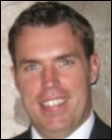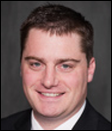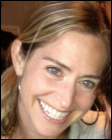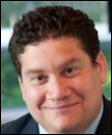HIStalk Interviews Michelle Holmes, Principal, ECG Management Consultants
Michelle Holmes is a principal with ECG Management Consultants of Seattle, WA.

Tell me about yourself and the company.
I am a principal with ECG Management Consultants. I’ve been with the firm for about ten and a half years. I’ve worked in healthcare since 1993 and have been involved in healthcare IT specifically since 2003, which was when I was involved in my first EHR implementation.
ECG is a healthcare consulting company. We focus on providers and payers, specifically. We’ve been around since 1973 and have services in technology, operations, finance, and strategy.
How actively are health systems buying physician practices or affiliating with them in creative ways, and how are tighter linkages between health systems and practices affecting quality and cost?
I wouldn’t categorize it as an emerging trend. It’s a trend that we’ve been seeing for quite a while now, which is various forms of consolidation. Whether it’s acquisition or some other type of affiliation, the number of independent physician practices is reducing in size and the number of independent hospitals is reducing in size.
A lot of that has to do with efforts associated with improving quality and also containing costs. Reducing redundancy out of the system, whether it be from a personnel perspective, a technology perspective, whatever the cost basis might be in that regard. Also taking the things that the individual organizations do really well — in terms of service lines, specialty care, etc. — and proliferating that across a broader network of providers to try to increase the quality for that provider base up to a higher bar than what was previously variable from group to group to group.
Are you seeing any new urgency on the part of health systems to look harder at their costs since they are responsible for a lot of overall healthcare expense?
With the transition from volume to value, it’s essentially becoming a business imperative that they do that. Whether that includes acknowledgement that they they were part of the problem, or they see that now is the opportunity to focus on that and to act on that because it’s a requirement if they’re going to be sustainable and maintain any type of margins because of how the payer environment is shifting. Either way, the focus is there. You see cost control measures, but you also see a shift in care out to the ambulatory environment just to reduce the higher-cost acute care that tends to result in the larger bills.
Are hospitals prepared to be more responsive to their customers or patients than they’ve been in the past?
It’s highly variable in the market. You see some organizations that have led the charge on that and have made it a competitive advantage for themselves within their respective markets.
If you look at, for example, the portal adoption rate for Kaiser since they launched their portal in the early 2000s and had that focus, that’s become a mainstay of their business and has helped them to be competitive in many environments where the consumers have multiple options, in terms of insurers, but overall network providers. Then you see other pockets of the country that aren’t thinking that way at all yet. There is a ton of variability there.
For some payer and provider organizations in the country, you’re seeing entire consumer technology divisions being created and being supported with capital and operating dollars. To have the patient be more at the center of the decisions that are being made and do internal investment in consumer technologies, versus just waiting for the broader IT industry to necessarily catch up in some cases.
What is worrying academic medical centers right now?
The AMCs have a lot of the same pressures as other organizations, but then they have additional requirements that are put on them, whether it be research, their GME programs, or where they get their funding. They have their own concerns as everyone else, but they have a lot of additional challenges and requirements that they have to work through that make it much more difficult to figure out how they’re going to allocate funds and where they’re going to receive funds from.
You also see academic medical centers that have had a distributed group within them, separate sets of clinics that were operating fairly independently and they’re trying to create more of an integrated group within themselves to try to lower the cost basis, but also try to take out the variability from area of care, whether it’s department to department or specialty to specialty. To your point earlier, they can also look at the cost and the quality basis that they’re working from at the same time.
They have to handle all that at the same time that they’re dealing with the challenges of operating a school of medicine, operating a school of nursing, looking at the research requirements, providing faculty oversight, running GME programs, et cetera. It’s a lot to handle.
It’s been said that we’ve laid the technology tracks and are now realizing what we can do with newly collected healthcare information. What ideas are out there?
In terms of Meaningful Use, it definitely got systems in environments of care where it didn’t exist before. Areas of the hospital, clinic, or whatever that were largely paper based. It did push a lot of organizations to at least get some digital storage. Did it get all of the benefits that were touted at the time? I personally don’t think so. I think a lot of people don’t think so either, in terms of it being the magic bullet that it was marketed as, to improve care and improve safety. As people have these systems, whether they be expensive systems or lower-cost systems, in their environments now, they’re seeing ways that they can optimize those systems so that they’re using the data to make better decisions.
A lot of the other benefits in terms of efficiency, I don’t think that we’ve seen those. The usability of most of the systems, especially on the clinician side, hasn’t been there to allow more efficient work flows. They’re looking at ways that they can use the information and system to make wholesale different decisions about how they’re going to run their organizations, versus just appending that, they plug the system in and it’s going to make cappuccino for them, for example, and do all these wonderful things. They’re going to have to make more transformational decisions about how the organization works on a day-to-day, week-to-week basis. If they can make some of those decisions based on what the data is telling them, at least they can be more directive in what they’re moving toward 100 percent reactive to whatever the latest firefight is.
What will the impact of the CPC+ program be? Do you see CMS wanting to become more involved with how EHRs are used?
Moving away from just the rules and regulations associated with Meaningful Use is allowing the vendors to put more of their R&D dollars in some of the stuff that matters more so in terms of how systems are used within environments of care and that usability factor that’s going to drive efficiency and adoption that actually results in these types of outcomes. I think CMS putting some focus on programs like this, as opposed to, “Which buttons are you clicking to produce which reports?” so that you can satisfy the requirements of a given stage and avoid the penalty for not complying with those stages — we’ve gotten a little bit of that behind us.
By having more quality-centered programs like this announced, it’s going to further help align the interests of the users of the systems and the makers of the systems so that those development dollars are going into things that can help the providers, help the hospitals and clinics, and ultimately and ideally, provide some efficiency and care outcome impact as well.
The nice thing about these programs is that they do emphasize the fact that there’s a lot in these technologies that people put in in the Meaningful Use era that they just haven’t really used yet. They were using the basics of it, whether it be decision support or outreach to patients for reminders, et cetera. They were using it to hit a numerator and a denominator without as much line of sight on what the impact of that could be or should be.
Programs like this one are a good reminder that you have a lot of tools at your disposal already. If you narrow your view and just try to move the needle a little bit in a couple of these areas, you can get some benefit out of them instead of trying to hit a numerator number just so that it looks right on the report, but not necessarily seeing what value that’s providing to your patients.
Do you have any final thoughts?
It’s an exciting time in the industry because organizations are focusing on IT as a strategic enabler of other outcomes or directions that they want to move, as opposed to IT and IT investments as a standalone decision that they have to do or that may only be linked to the financial side of the company or the organization.When I first started implementing EHRs, it was really common that the IT director, or even CIO, reported up through the CFO, for example, and didn’t necessarily have an equal seat at the table with those making decisions. We’ve changed a lot of that in the last 10 years.
Organizations, especially now as they’re looking at how to optimize their systems and, more and more, if they need to replace their systems and how they need to replace their systems – that’s a much more coordinated and collaborative conversation with strategic drivers, financial drivers, and clinical quality drivers. You have your IT leaders saying, "We’ll help enable whatever the best thing is to support those other goals and initiatives," as opposed to having more of an IT decision or an IT implementation in a silo, where we hope that we get those other benefits and we definitely hope that we don’t introduce harm or a step back in those other areas of the organization. “We’re going to do this with the intent of improving those areas and measure our success as to whether or not we did that,” versus measure our success on, “Did we get everything turned on at the time that we said we were going to flip the switch and within the capital budget that was given to us as part of our implementation?”
For me as a consultant, it’s a lot of fun right now. We’re doing this and we’re actually seeing some of the outcomes from what we’re doing, as opposed to, we’re doing this and we’re trying to get really excited about a go-live event, not knowing whether or not that go-live event is actually going to lead to anything meaningful in terms of real outcomes on the care and safety side, or on the cost control side.
For a while there, it was a bit of a sludge getting through healthcare IT consulting on a day-to-day basis, where it was so focused on go-lives and numerators and denominators. We took a step too far away from why it is that we got in this business in the first place. Now we’re getting closer to some of those original projects, at least in philosophy and emphasis, where nobody was making us do it, but we did it because it was the right thing to do. For me, my job is a lot more fun, over the last 18 to 24 months even, than it was for the few years before then.



































































































Is this HIStalk or Reddit? Hard to tell the difference with the comments being posted.